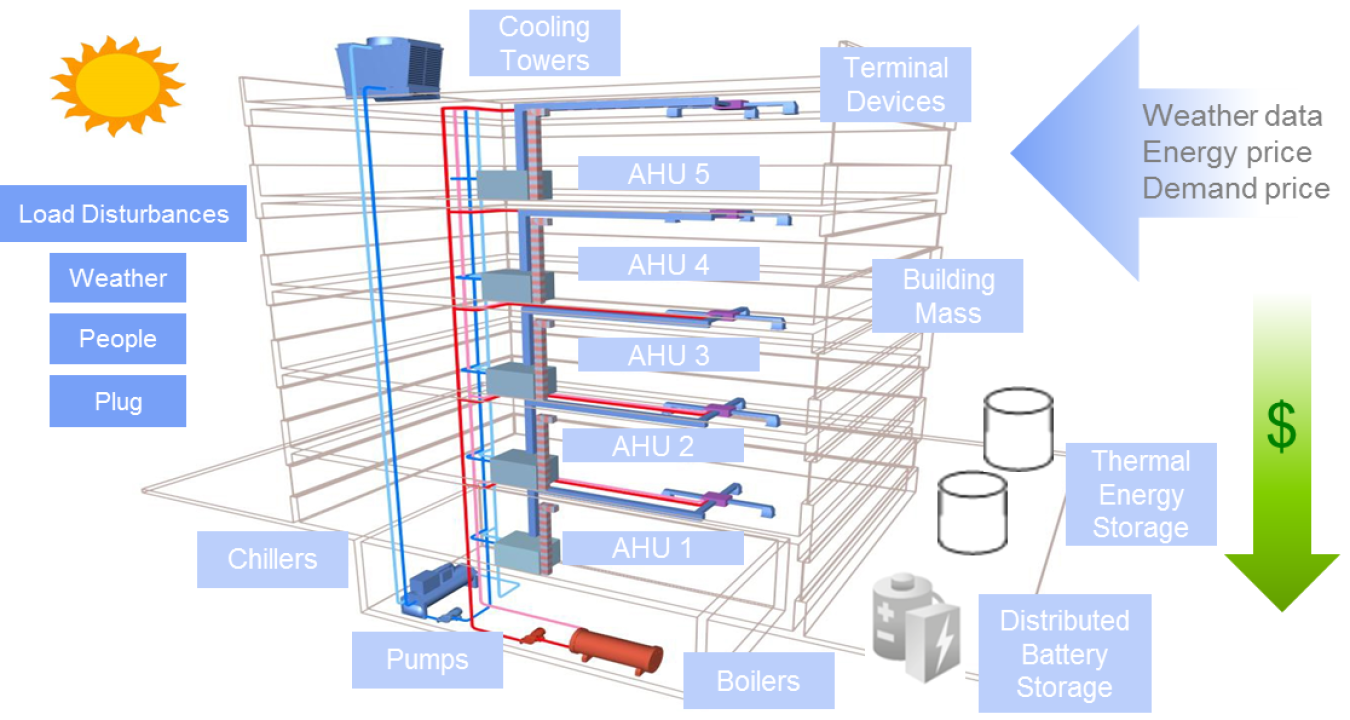U.S. and China researchers are collaborating to develop an occupant responsive model predictive control (MPC) approach that works at multiple scales.
April 25, 2017
US and Chinese researchers are developing occupant-responsive model-predictive control (MPC) algorithms that scale to multiple levels: room, building, and campus.
Lead Performer: Lawrence Berkeley National Laboratory – Berkeley, CA
Partners:
-- Johnson Controls – Milwaukee, WI
-- United Technologies – Farmington, CT
-- Walt Disney Imagineering – Glendale, CA
-- Lutron Lighting Controls – Coopersburg, PA
-- Lend Lease
-- China Academy of Building Research – Beijing, China
-- Tsinghua University – Beijing, China
-- Zhuhai Xingye Green Construction Technology Co., Ltd. – Zhuhai Shi, China
-- MOHURD, Building Energy Center – Beijing, China
Project Term: April 1, 2016 – March 31, 2021
Project Objective
The U.S.-China Clean Energy Research Center (CERC) is a pioneering research and development (R&D) consortium bringing together governments, key policymakers, researchers, and industry to develop a long-term platform for sustainable U.S.-China joint R&D. Building operation needs to become elastic, energy-optimized, grid-aware and occupancy-responsive to improve overall system efficiency.
This project will develop and demonstrate an open-source, hierarchical, occupancy-responsive model predictive control (MPC) framework at room, building, and campus levels. The framework will be built on open standards; utilize stochastic modeling and machine learning for user behavior, occupancy, and load prediction; and for model and state identification to reduce commissioning time and support continuous commissioning, adjust to actual operation and provide information about performance degradation. The area of work will develop building and district energy systems that optimize their operation across end-uses; learn about the energy system dynamics and user’s comfort preferences; and inform the building occupants and operator about how to save energy and shed loads. This will be implemented and tested on real buildings for occupancy prediction, system identification based on machine learning, and model predictive control. An open test-bed will be established at a demonstration building in Shanghai, China, where industry and academia can develop and demonstrate their building control solutions.
Project Impact
This project is creating a wide-scaling occupancy-responsive model predictive control (MPC) to transform the built environment to be zero-net energy, smart-grid, and Internet of Things ready. The energy savings potential in 2025 of the project is 2.9 Quads.
Contacts
DOE Technology Manager: Erika Gupta and Amir Roth
Lead Performer: Michael Wetter, LBNL

